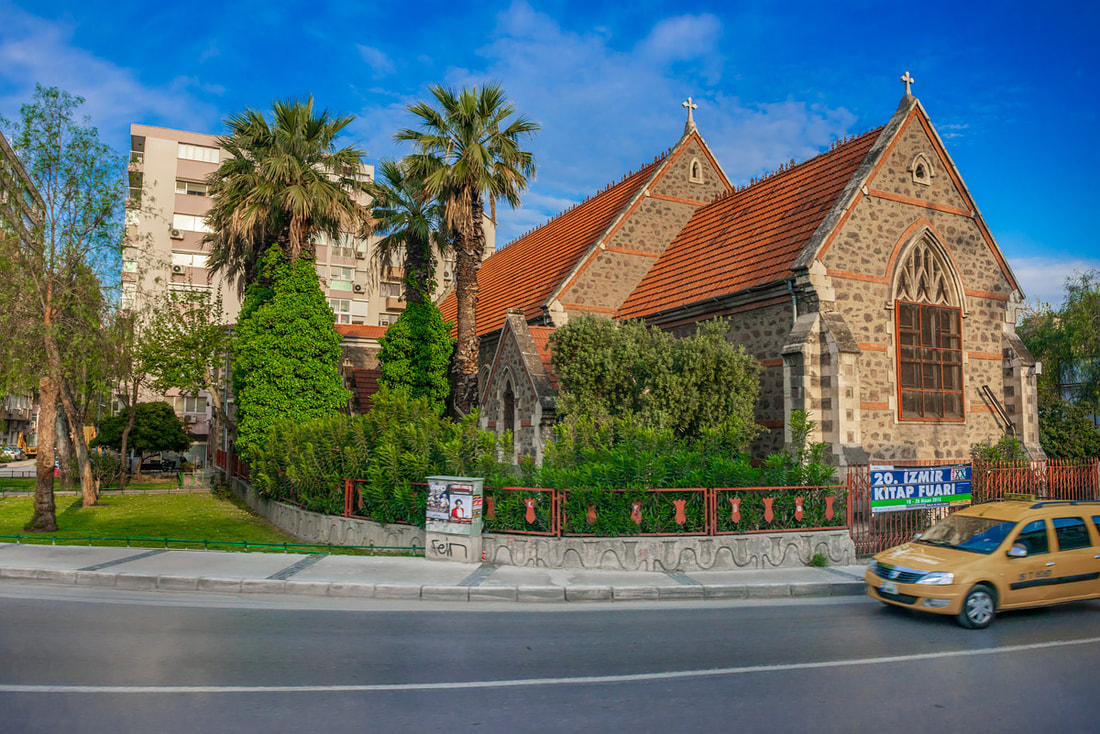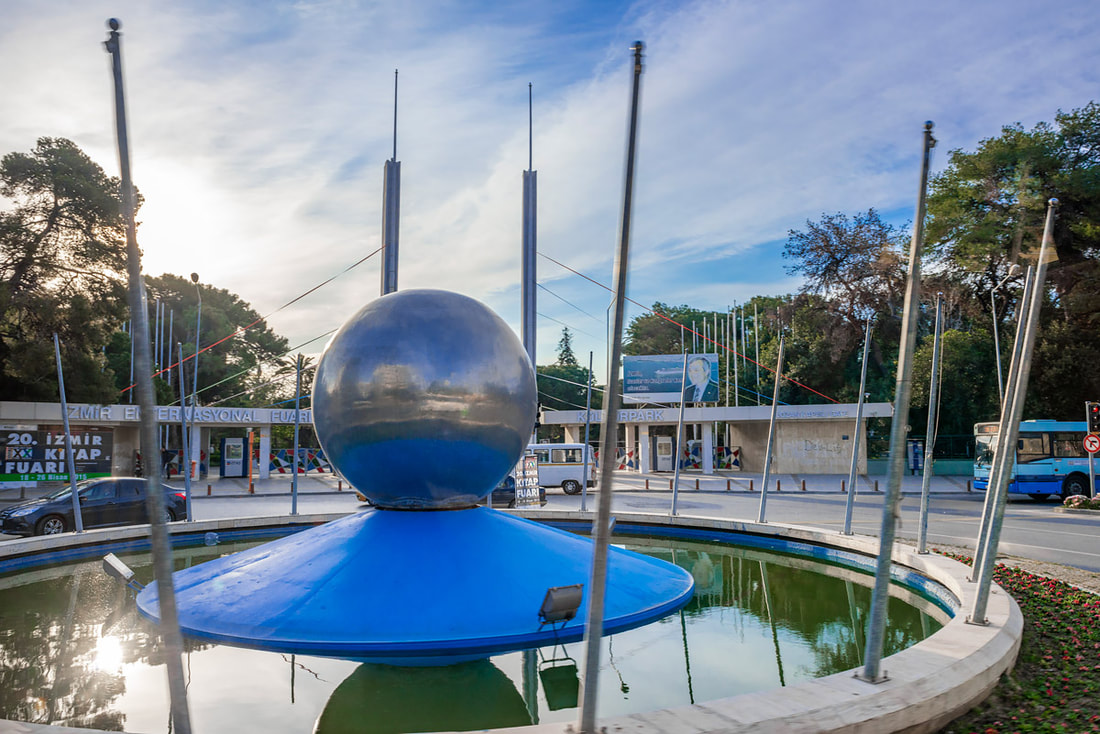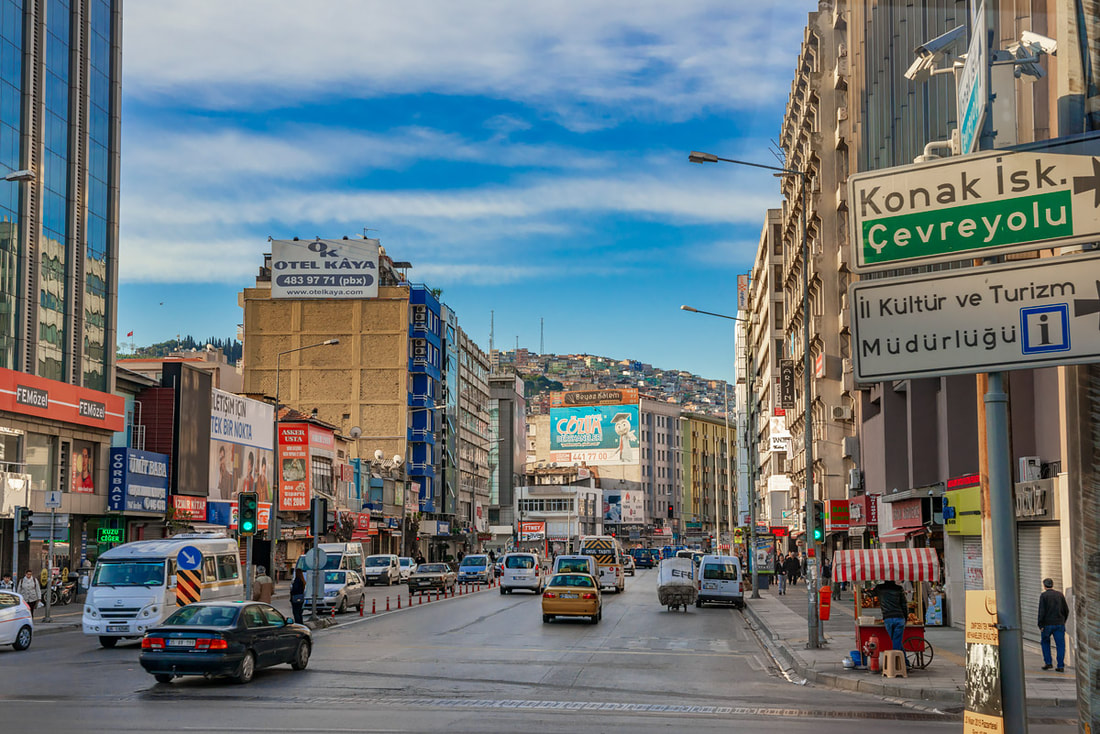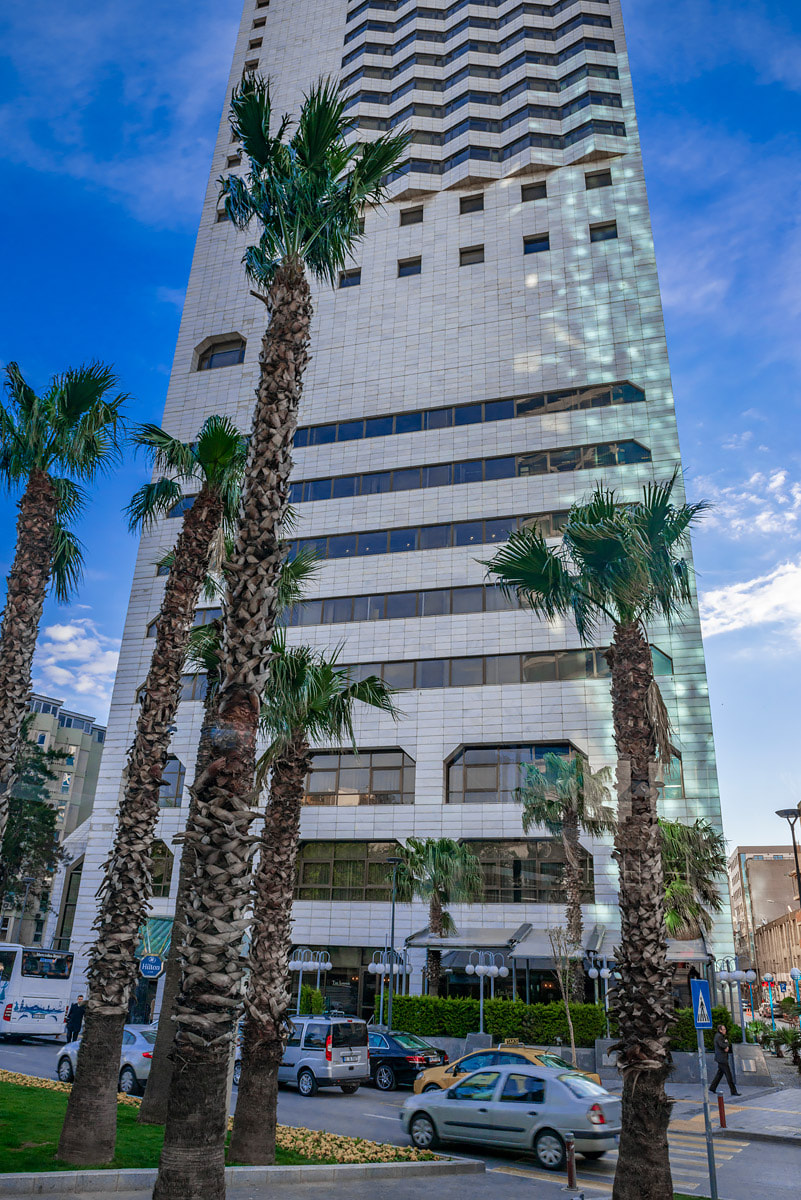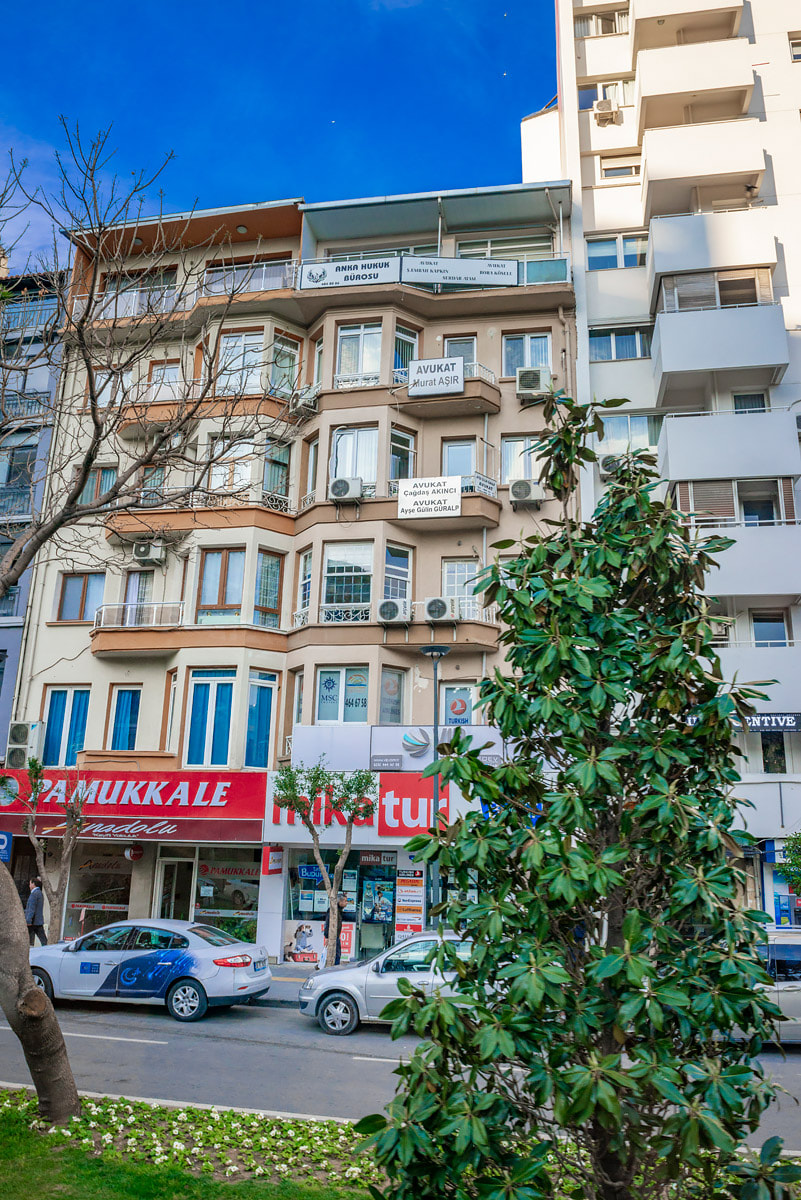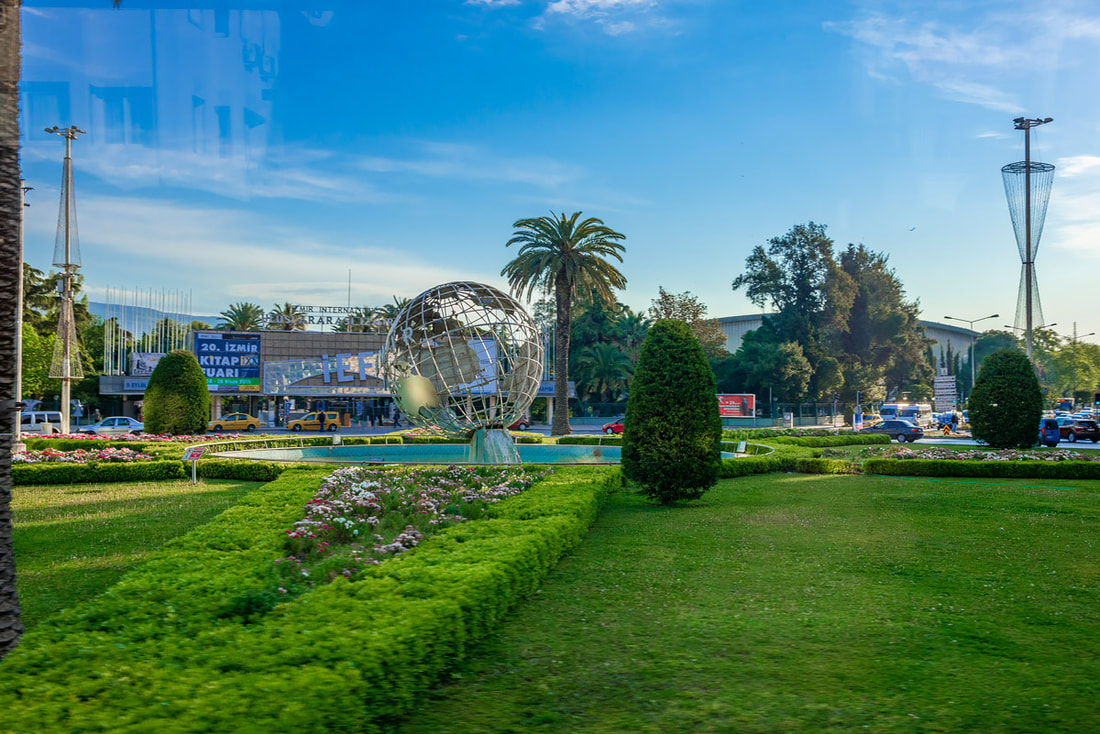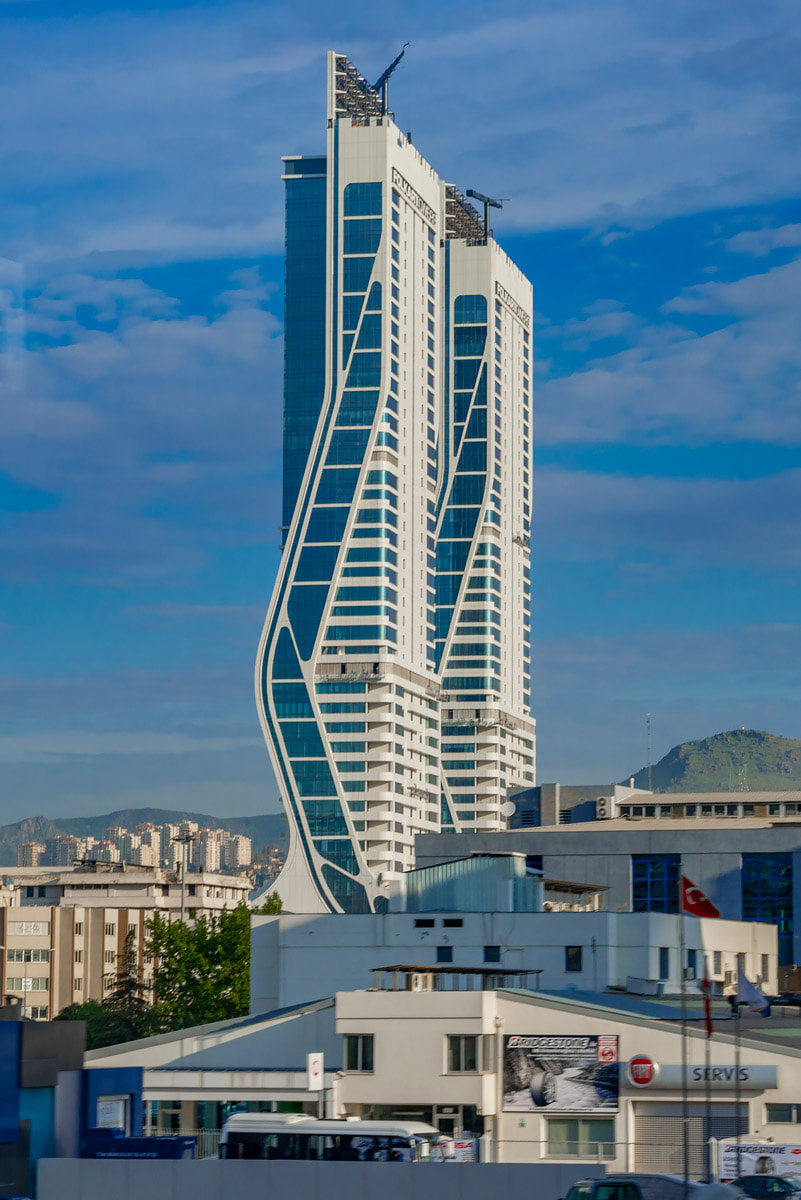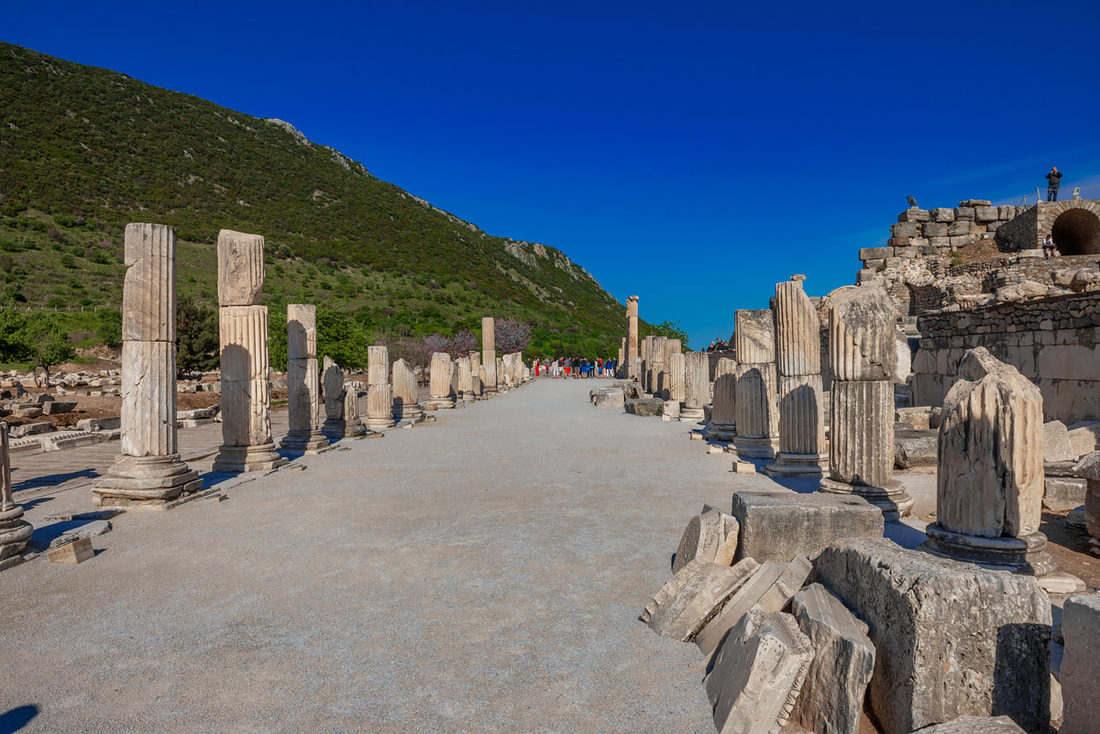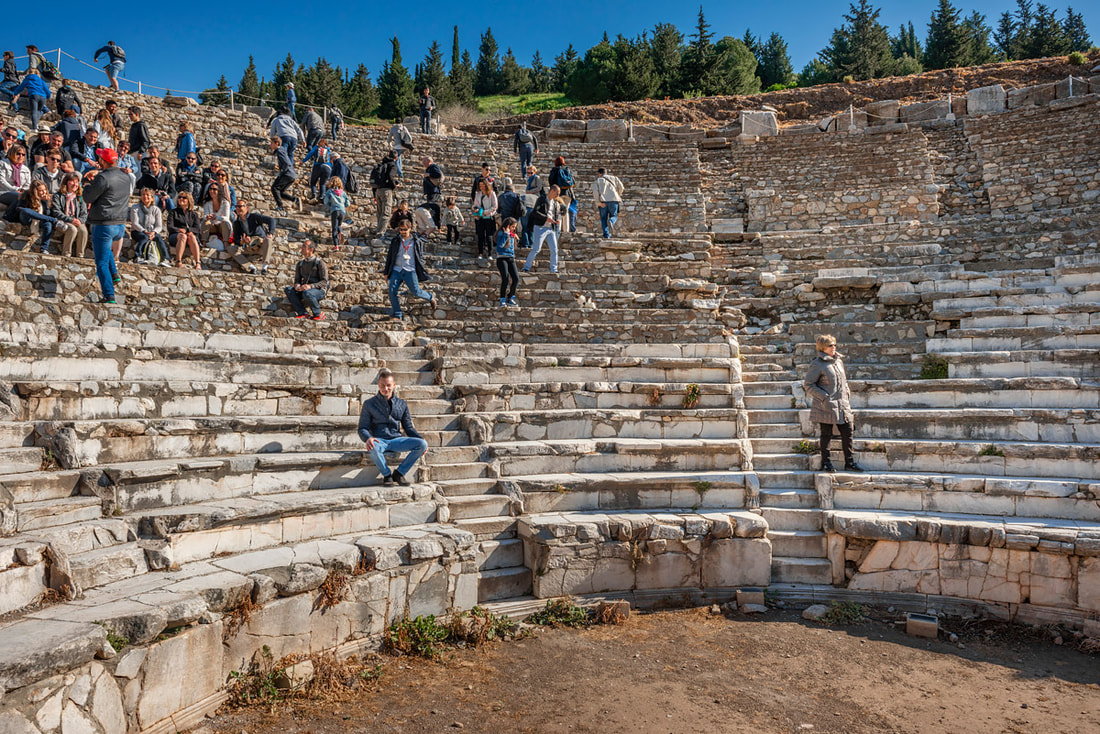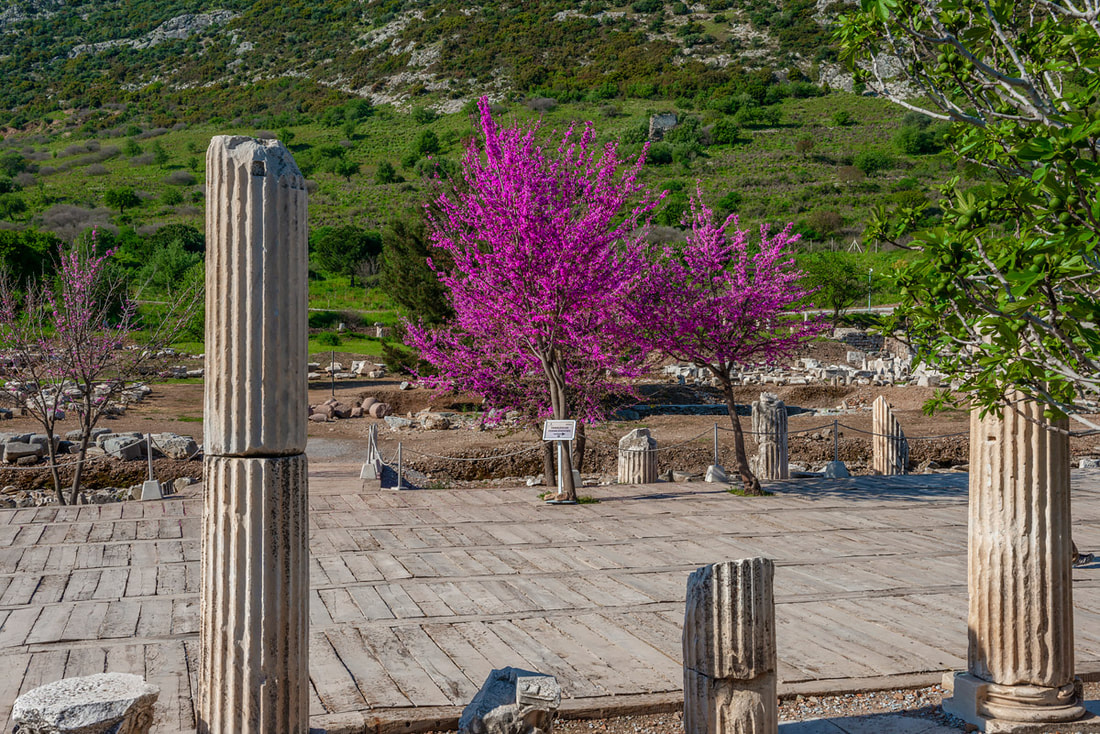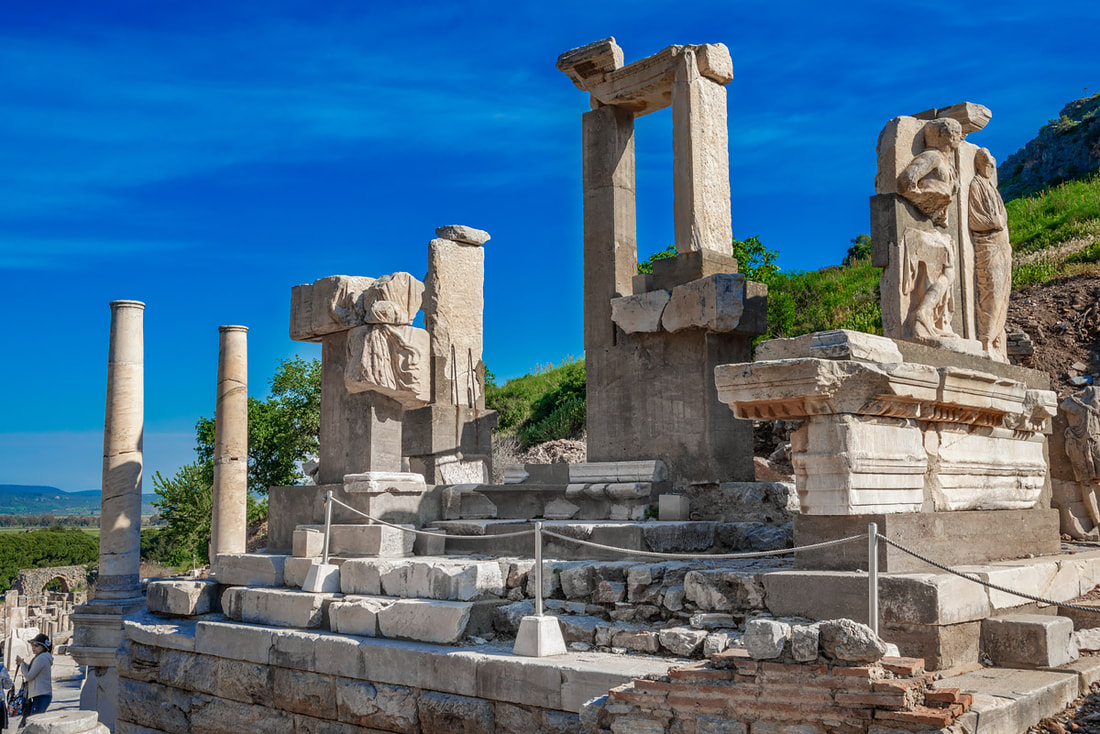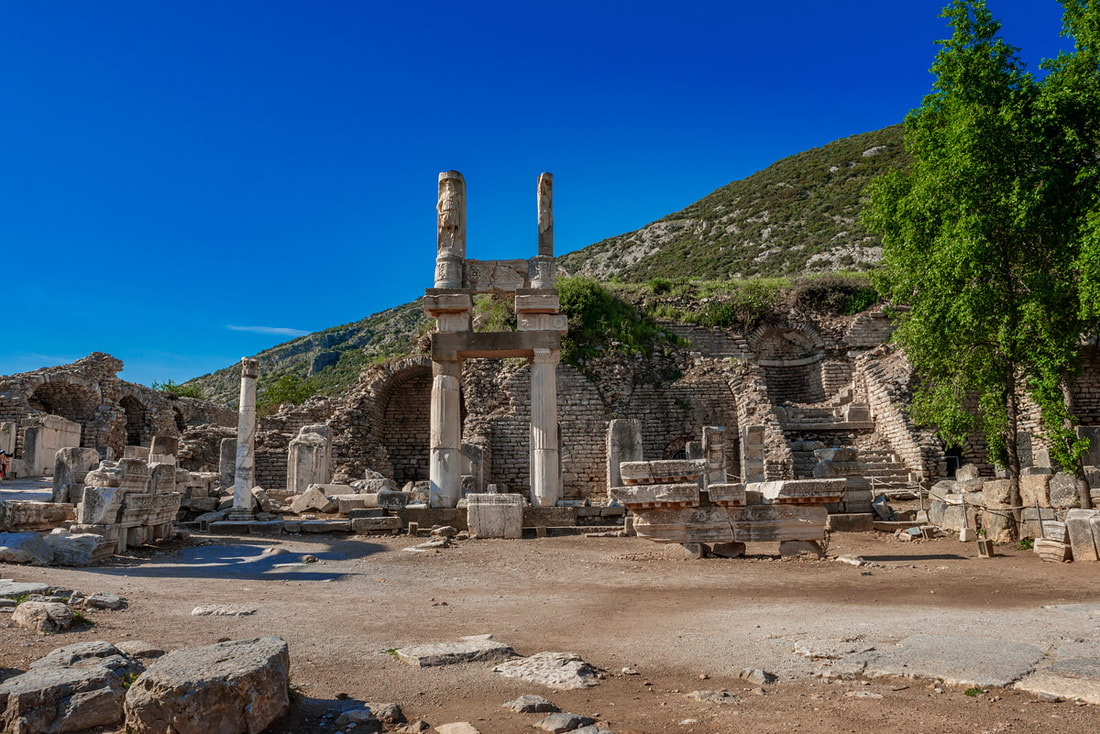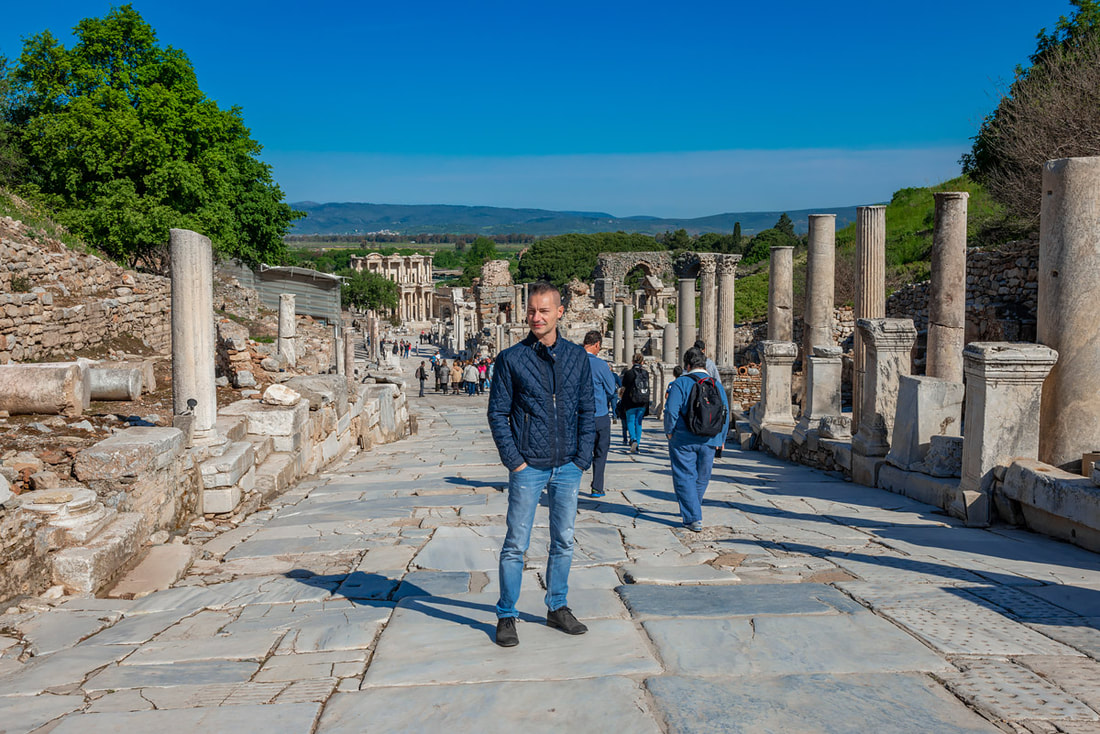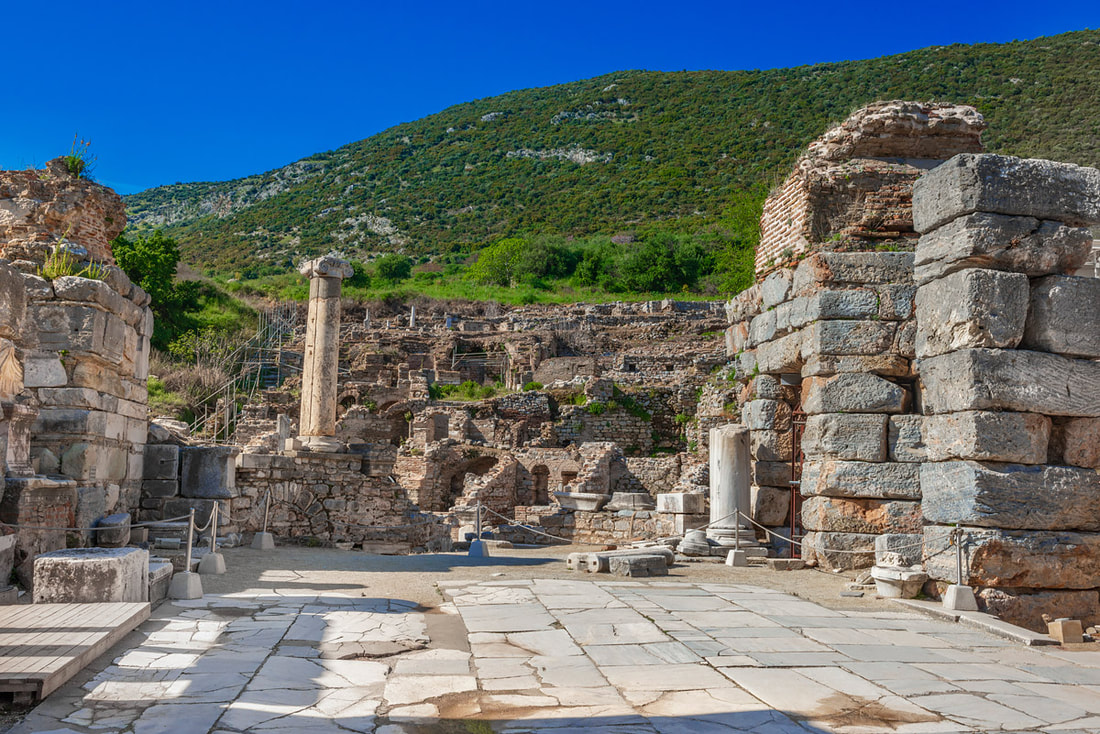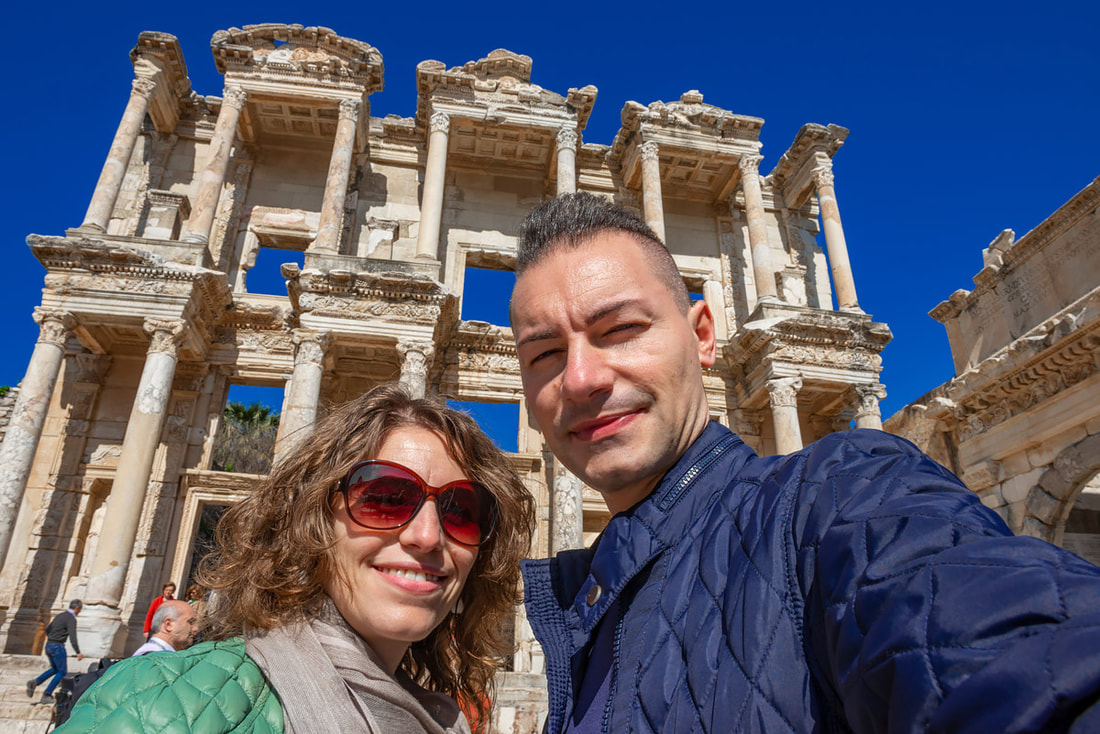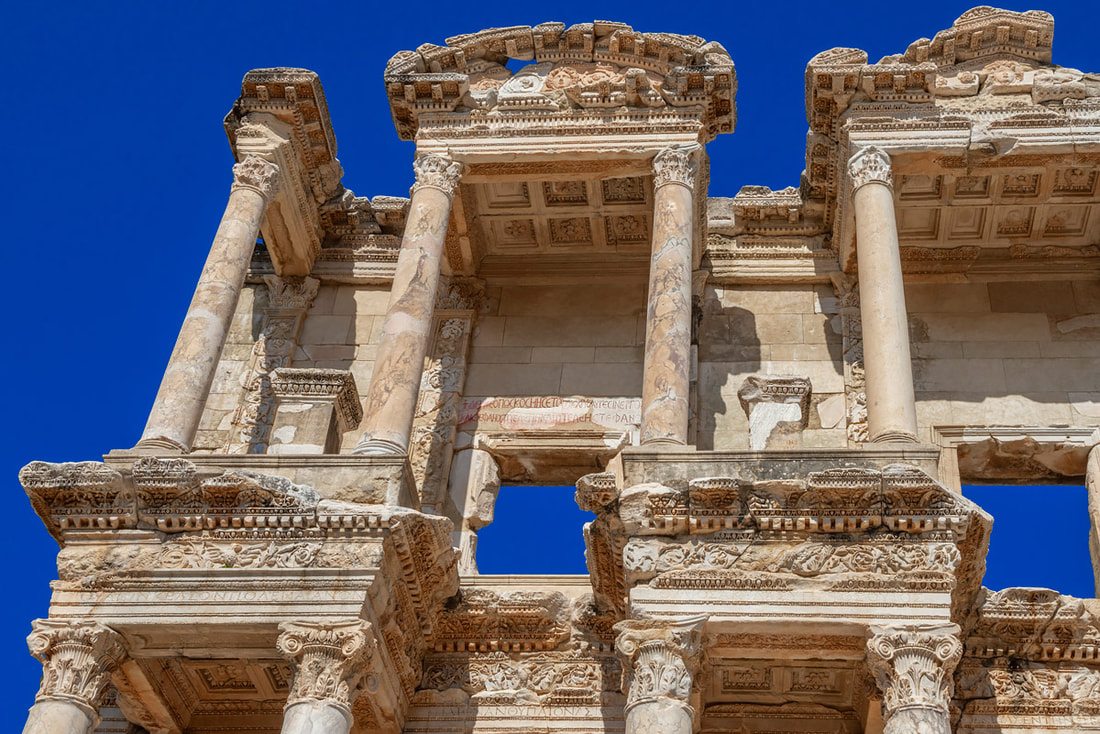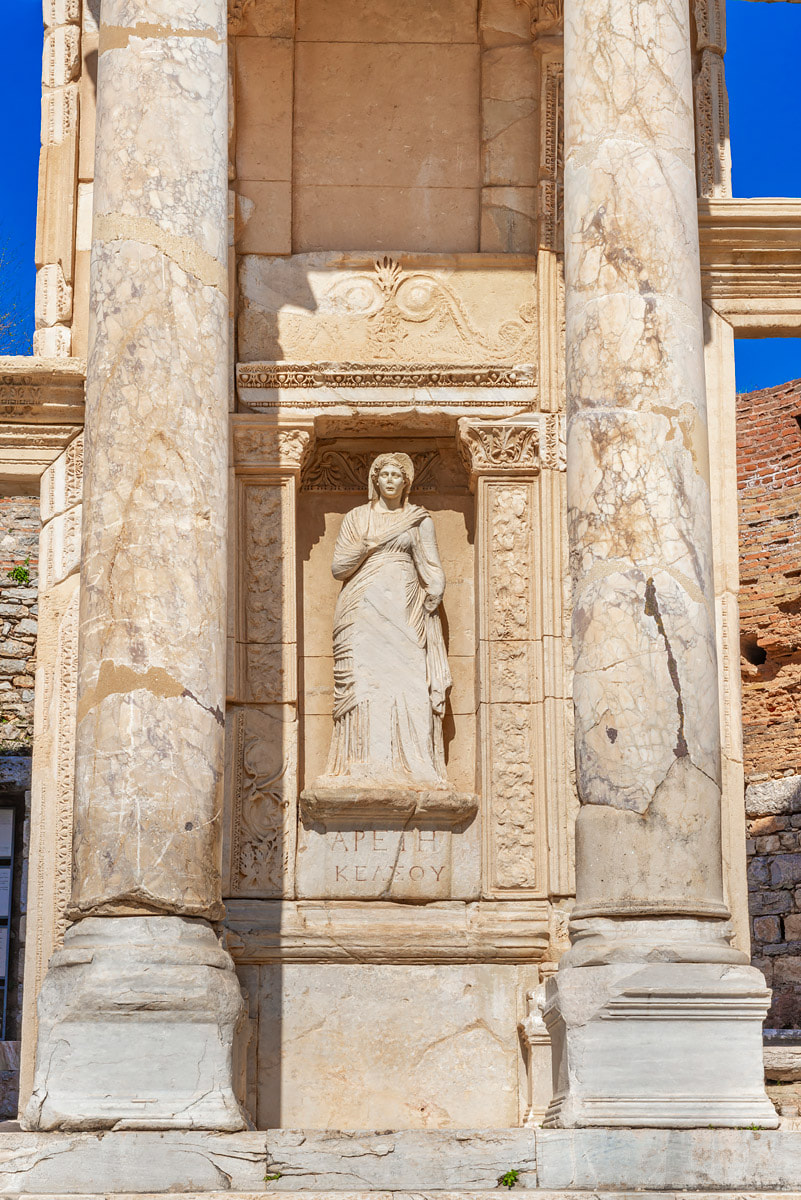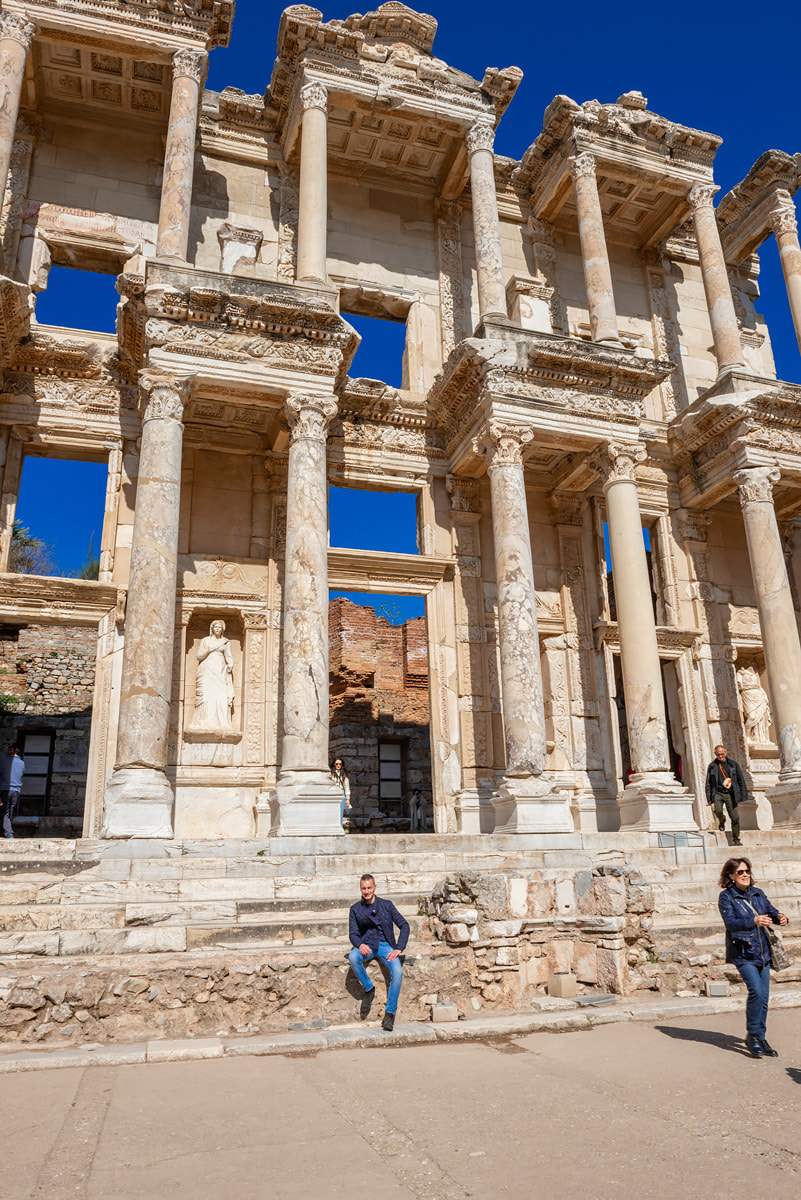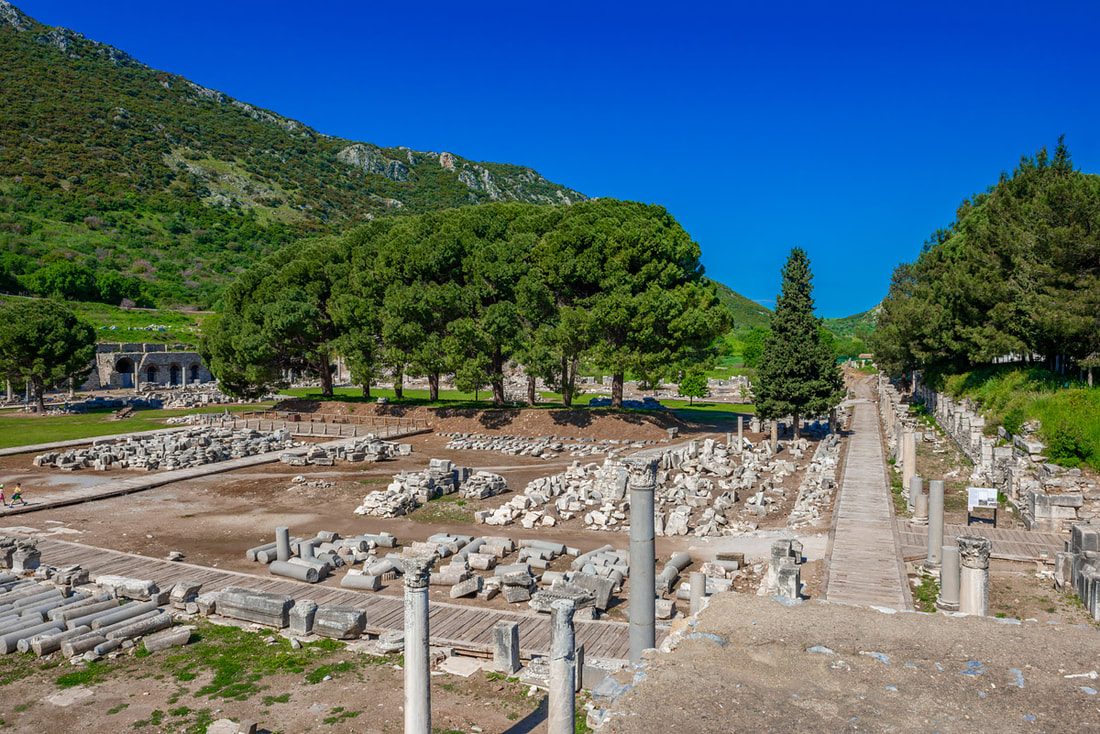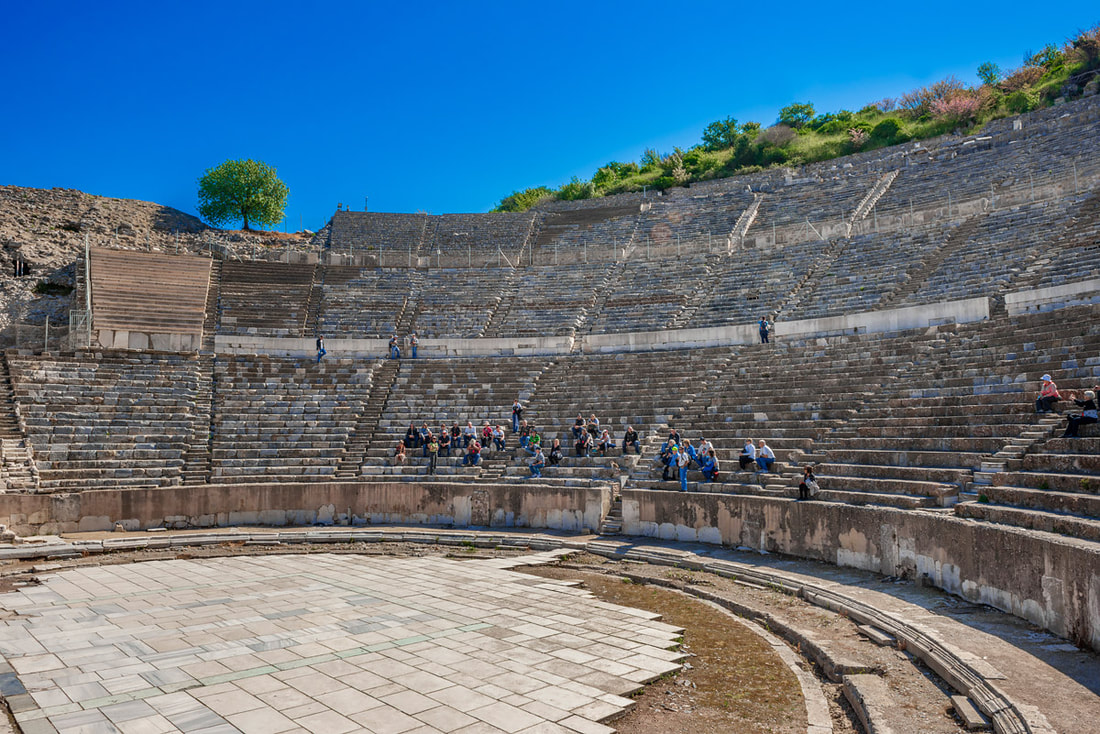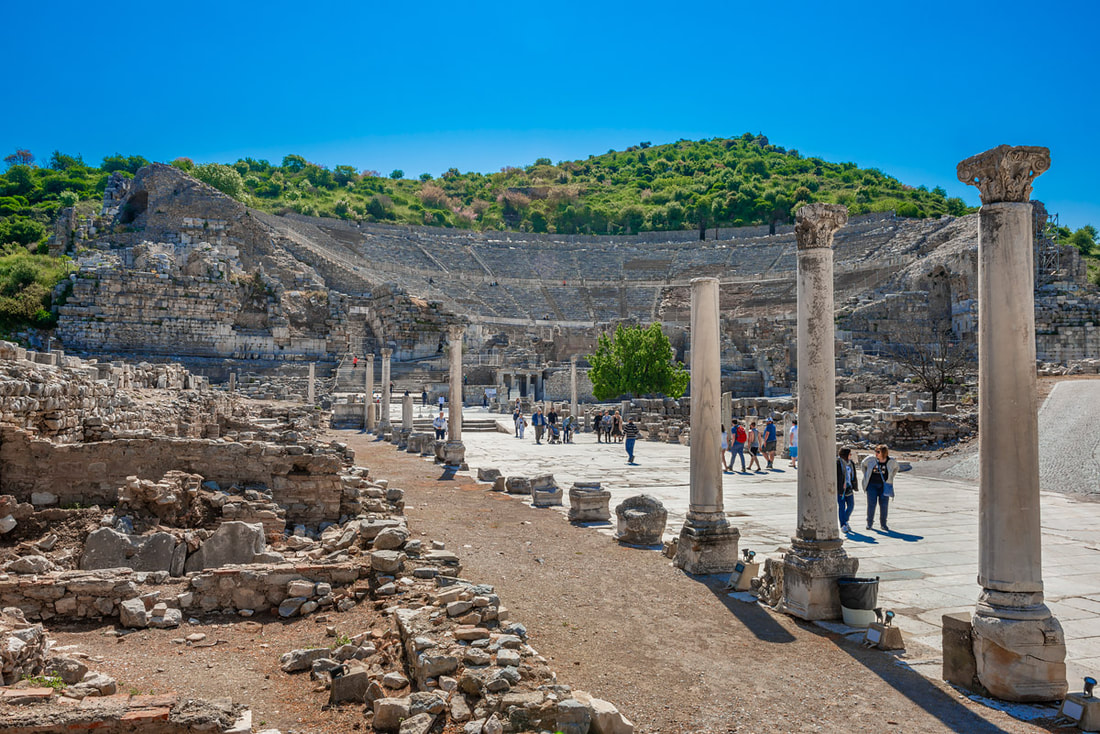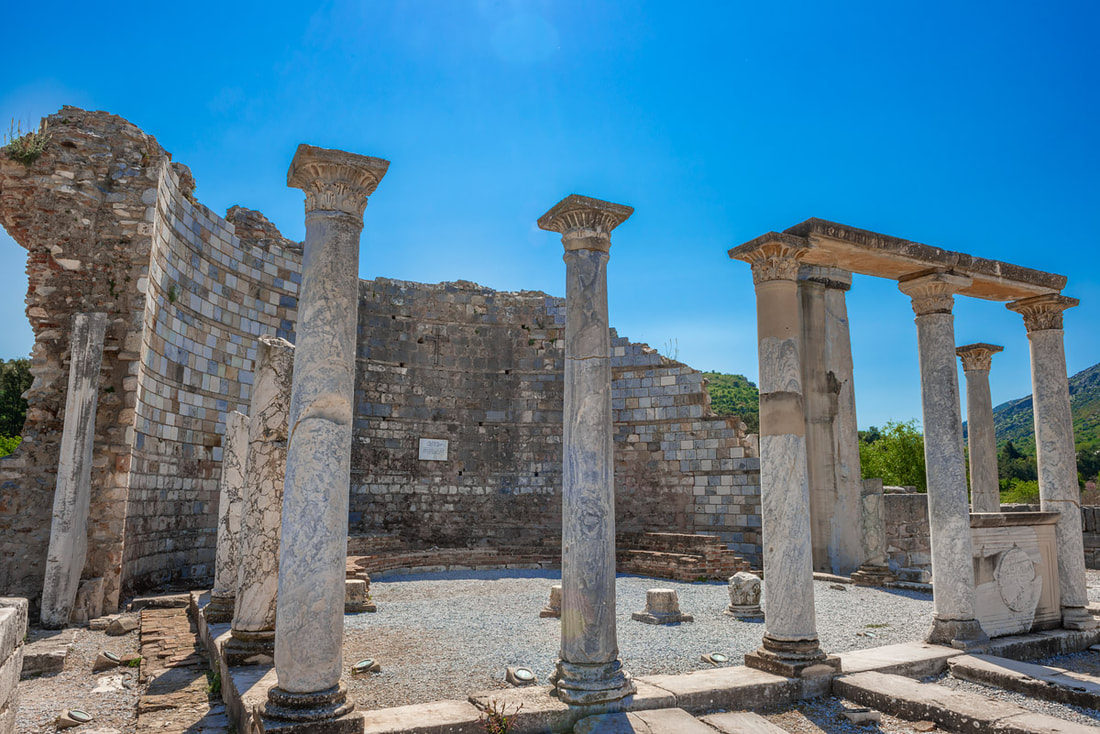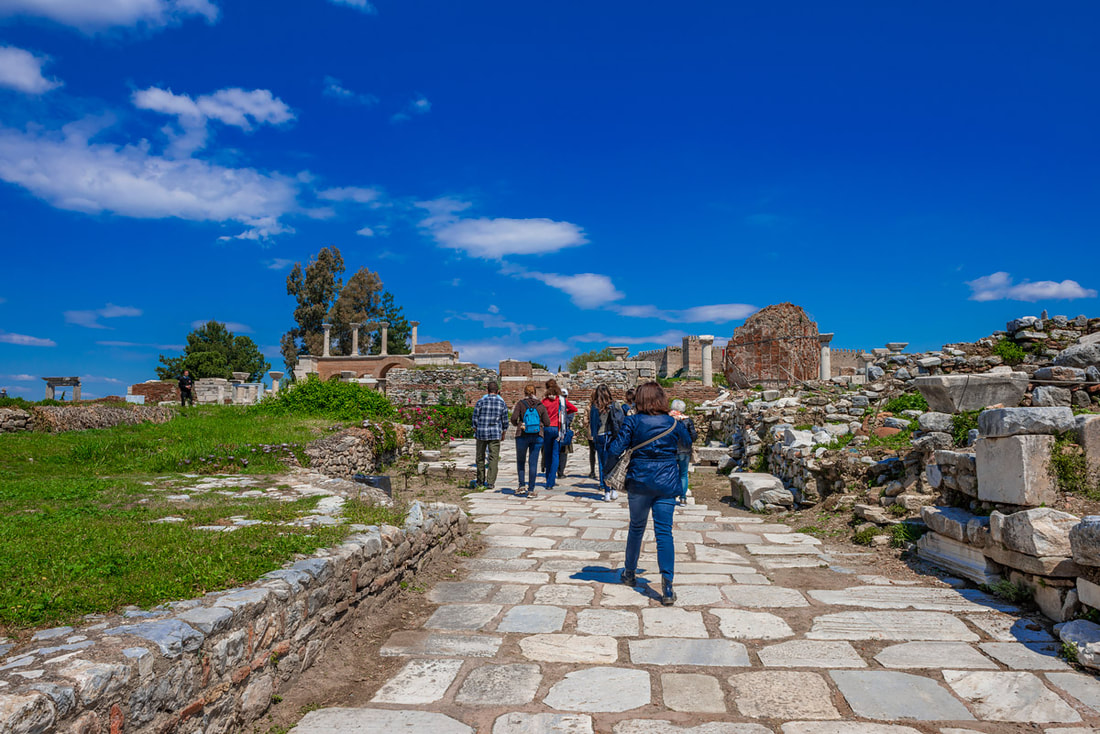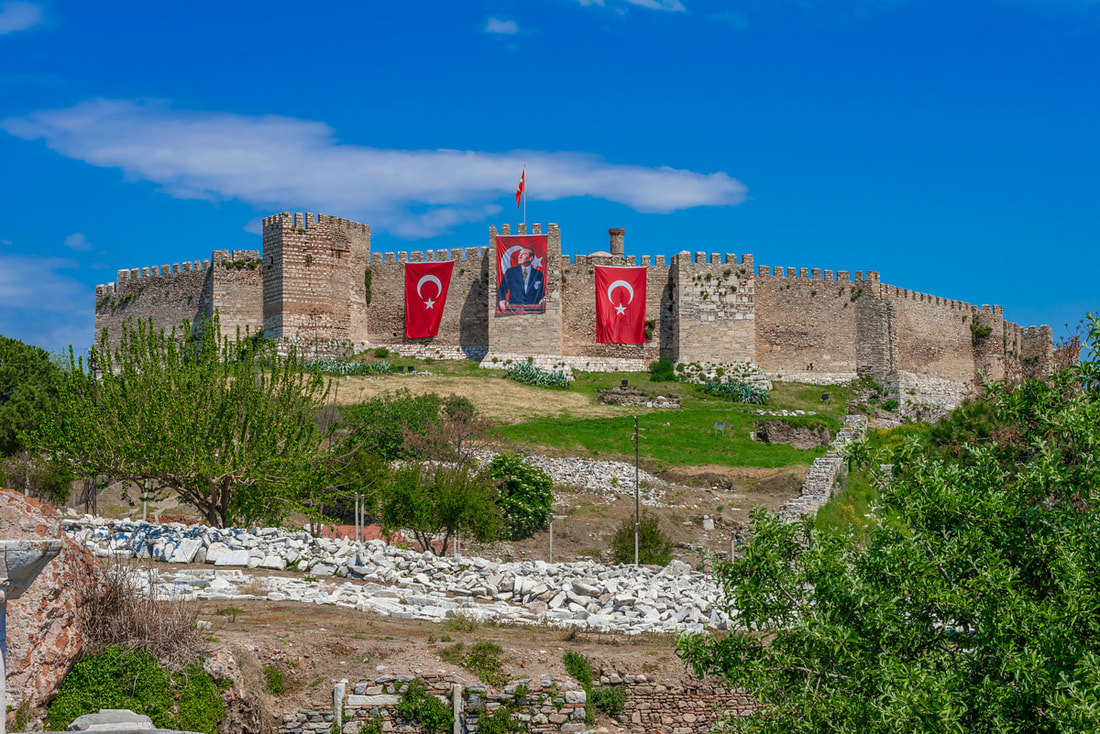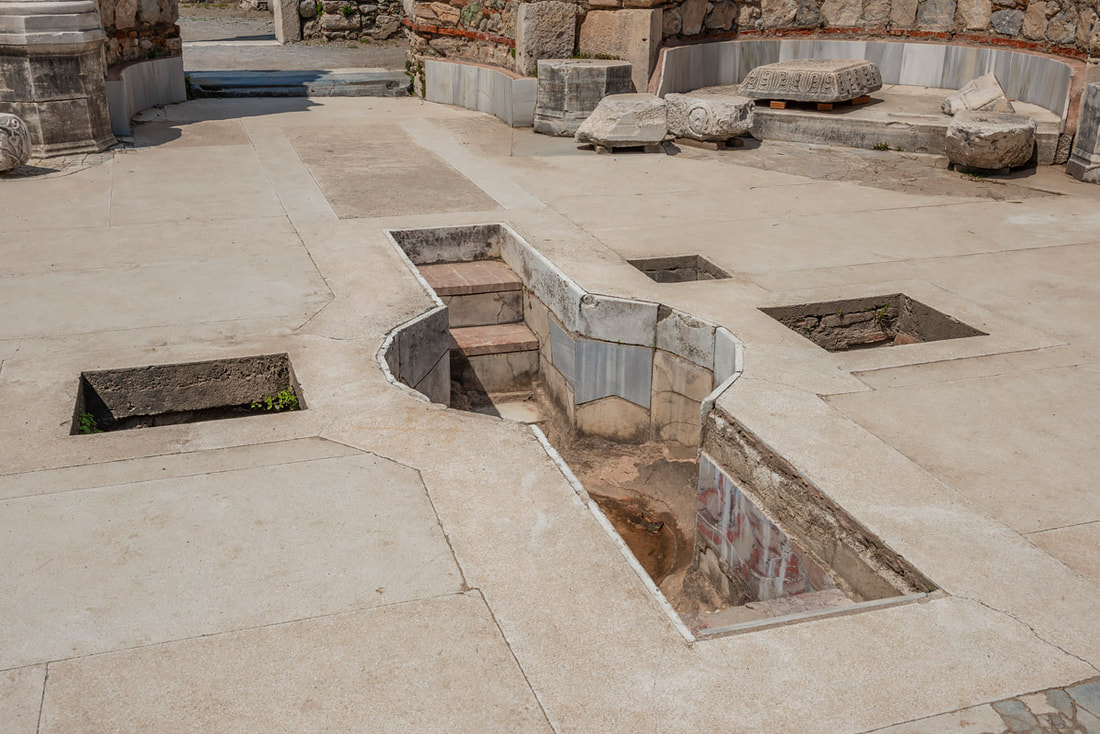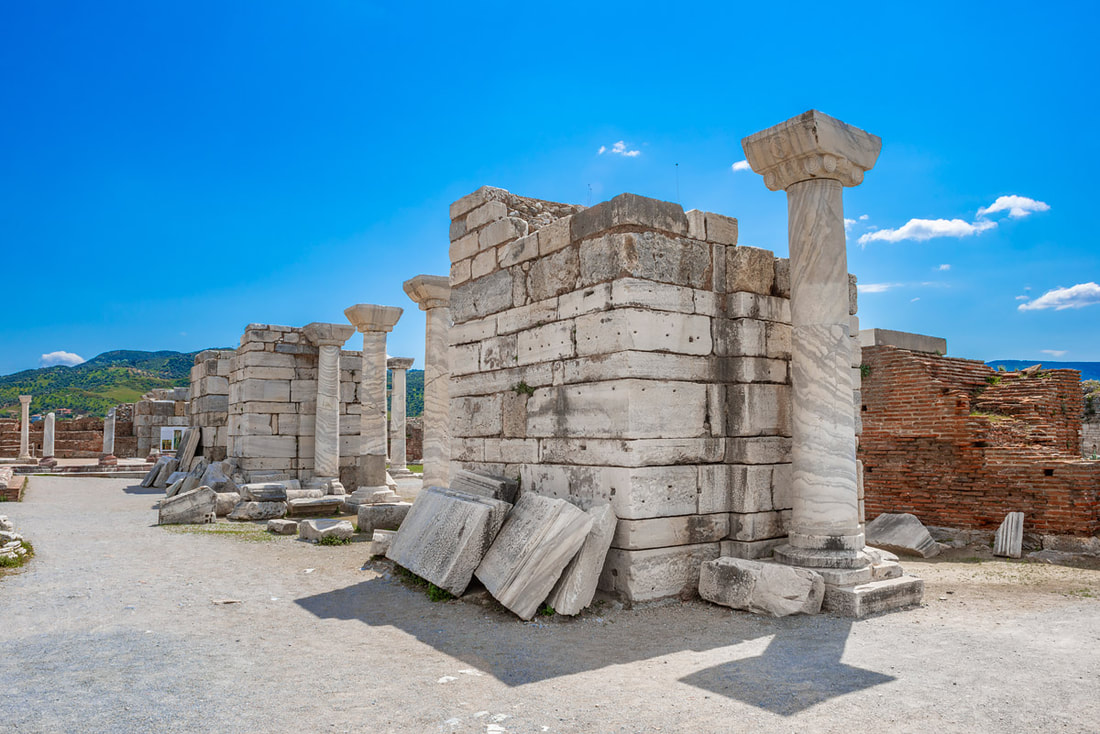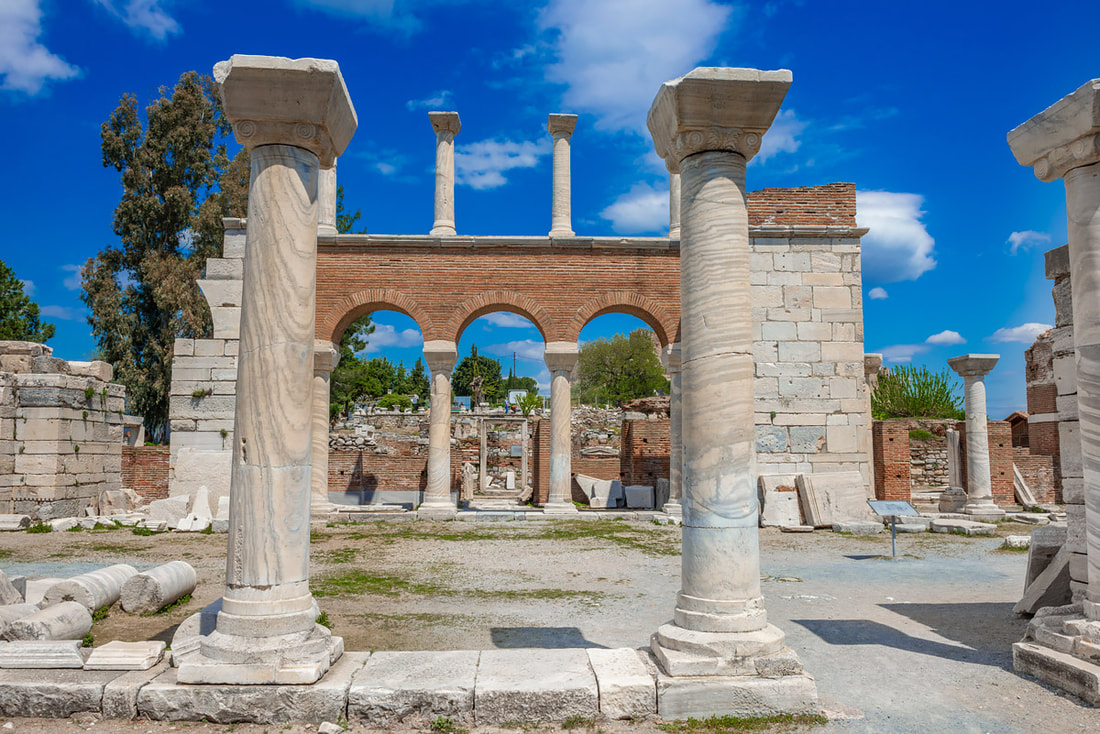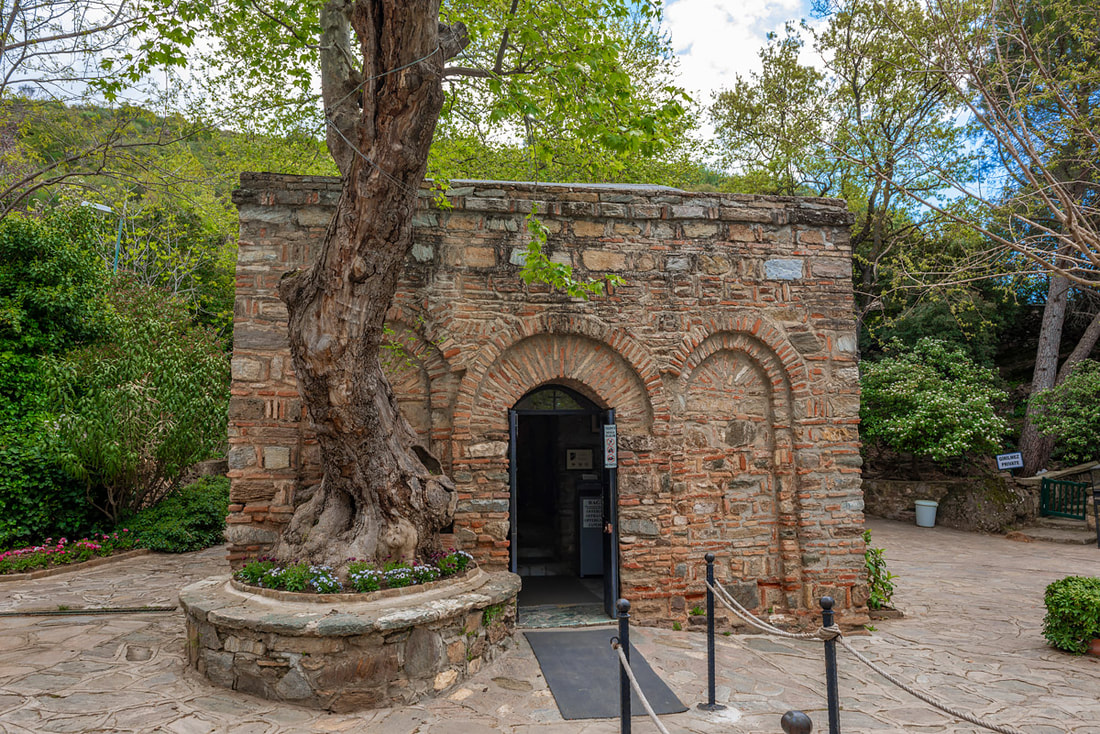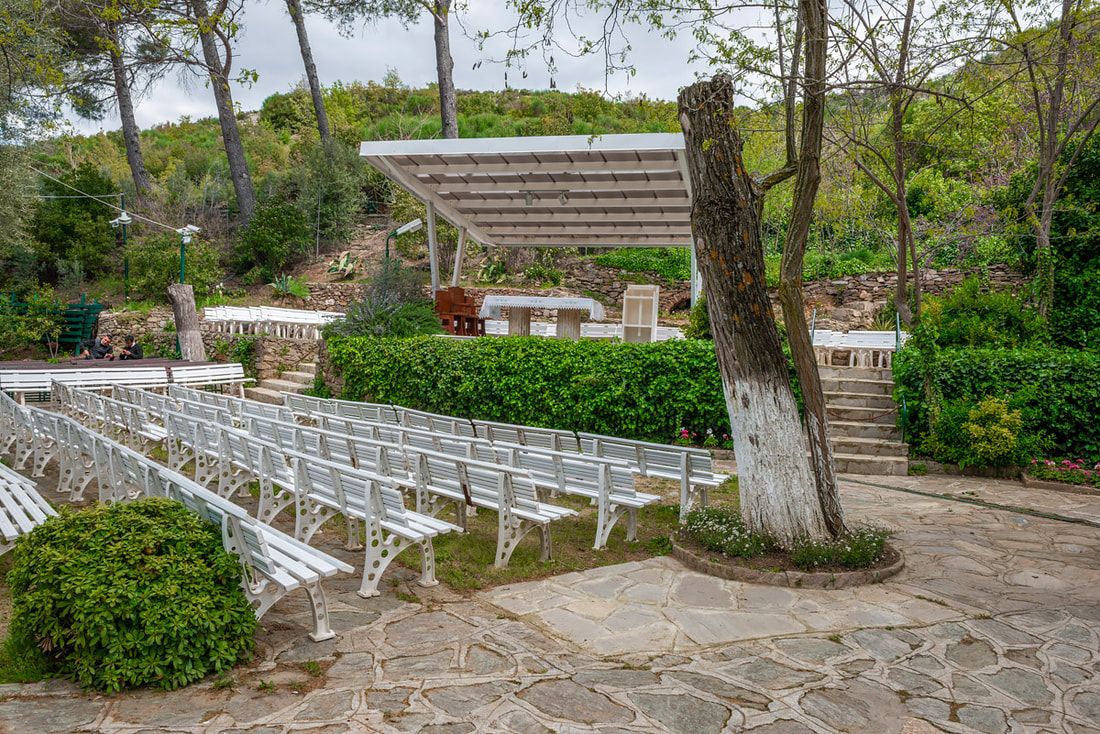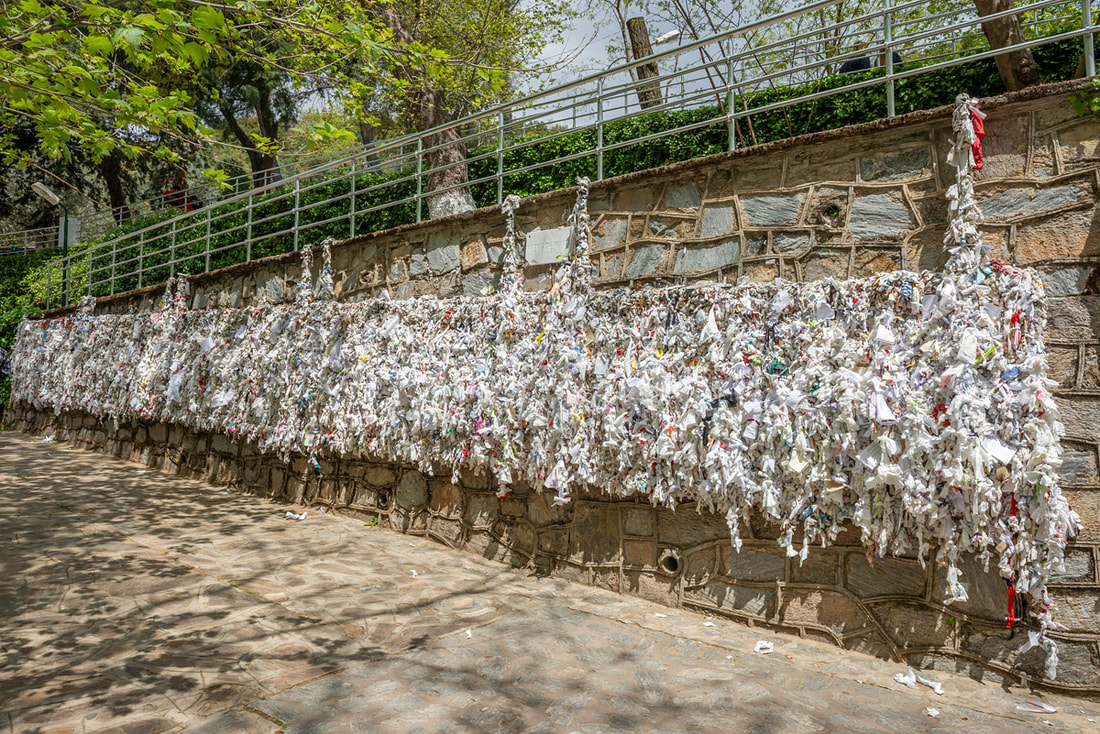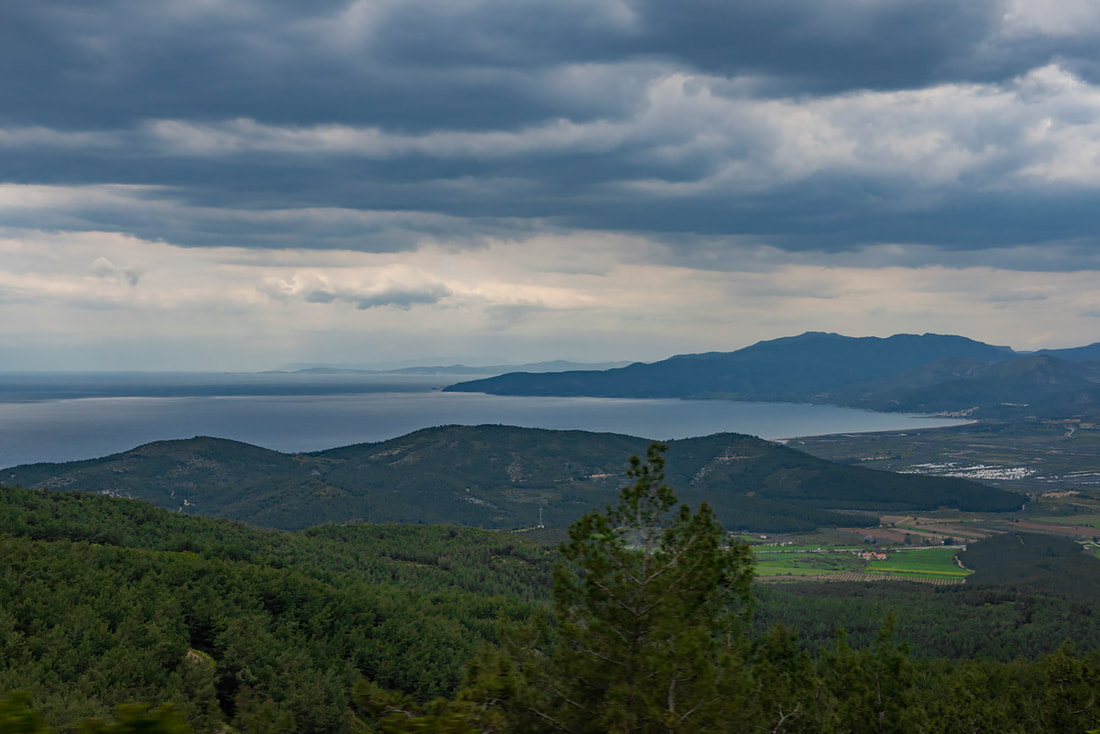By Antonio MalaraExactly one year after the trip to Jordan (I recommend reading Amman in order to know the backstory of the characters), the same pilgrimage group led by Don Valerio and his collaborators, has organized a new trip to Turkey. Also this time the news was given to me by my sister and once we discussed the details, we decided to be part of the group again for the second time. Even though it wasn't on my immediate wishlist, Turkey had some places I wanted to see. First of all Istanbul, this city had intrigued me a lot in recent years, but also Pammukale seen on online magazines and then Cappadocia with its type of landscape that was unique. This trip to Turkey included all these places that interested me and much more so I was super motivated for the new adventure. The format was the same as the previous year so being a pilgrimage, would also be visited sacred places and there would be pauses for prayer. With this awareness I was very ready to join again with a group that saw almost all the same people of the year before so in April 2015 I packed my bags for the new destination. We landed in Istanbul with a direct flight from Catania but our destination was Izmir. We waited for the flight connection for over an hour, after which we were back on the plane but for a very short flight. The arrival in Izmir was at 09:20 PM and after getting to know our guide we went to the hotel. From that evening I remember only a buffet dinner and the fact that we only stayed one night in that modern hotel that I liked. In fact, except for a couple of nights, the whole trip to Turkey involved a change of hotel in the evening but in the end it was not particularly stressful. IzmirThe first and only morning in Izmir started very early, after having breakfast we left the hotel around 07:20 AM. Our first real destination that day was the archaeological site of Ephesus but I knew for sure that we would also visit part of Izmir. In fact, that morning I discovered that the only thing we would see in the city, was one of the few Catholic churches present there. A little disappointed, I tried to capture the city with my camera, taking photos from the bus. I was curious about Izmir because at that time the city was a candidate for the 2016 Expo which was then assigned to the city of Milan. From the bus I noticed that Izmir had a mixed architecture, many new buildings all in glass along with other characteristic of the place whose architecture I don't know how to define. The church was in the part near the sea so we walked along the roads that allowed us to see the most modernized part. In fact, there were many green areas and wide streets that seemed to me to be newly built. Upon arriving in the church area, we discovered that it was closed, I don't know why. Thus, vanished for me the last chance to take some photos in the neighborhood while the others were visiting the church. At that point the guide said it was better to leave immediately for Ephesus so we could anticipate the times which was not bad. Immediately after taking the highway, my disappointment went away thanks to a discovery I made right there. Earlier I had seen in an online magazine two twin towers with a futuristic design, these towers were located in Izmir. This thing had completely disappeared from my mind and when the towers showed up in the distance looking out the bus window, I was really happy. I had time to take the camera and photograph them, perhaps a little shaky but really happy with the opportunity. The characteristic of these blue and white towers was the side design that gave the impression that the lower part was tilted inwards. To convey the idea, it was as if they were the legs of a flamingo but squared off and of a different color. Happy to be back in the right mood, I relaxed all the way to Ephesus. EphesusEphesus is one of the most important Ionian cities in the Anatolian region and its oldest remains date back to the 15th century BC. On Ephesus I had studied little or nothing but looking on the internet I was struck by a "building" in particular, they were the remains of the Library of Celsus. For me, therefore, the visit mainly had that destination and unfortunately the tiredness of that morning did not help me to discover that place better. We entered the archaeological site around 09:00 AM and what appeared in front of us was a vast plain full of ruins. Walking we arrived in front of the Odeon, this was a modest-sized theater that overlooked a dirt road lined with many columns. The remains of these columns were mostly low but there were also some very high ones. Within the odeon there were already several groups that followed the explanations of their guides. With my sister we took pictures in such a way as to make us understand the greatness of the theater, personally I don't remember if Don Valerio explained anything there. Instead, I remember that I moved alone trying to take pictures of details a little different from the others. Leaving the Odeon we walked along a stone road, after a while the road went downhill and suddenly that difference in height revealed the real Ephesus. In fact, the city extended at the foot of that plain where we were before, only we couldn't see it from there. This particularity fascinated me and I began to feel pleasure and enthusiasm in visiting that place. The first thing we stopped to see along that road was the Memmius Monument, a series of statues that, standing higher than the road, had an even more dominant position. Before continuing the descent and taking the large road that led down to the valley, we turned left because there was a place of greatest interest, at least this is what I had perceived. The place in question was the Temple of Domitian which appeared at the very end of the road. This area was quite large and what remained of the temple were two distinct parts. Coming from the road, there were two tall columns where on a girder there were two statues that made the design of the columns continue even higher. Behind these columns there were the walls then on the left side another large structure represented by a large arch always supported by two columns. Other ruins of the temple were carefully placed there all around the area, some were very large and made one perceive the original proportions of the temple. I listened to Don Valerio in the background but I was only able to understand that there was something important there but not what. I remember my sister telling me to take pictures that she would then explain to me. At that command, I carried out the order, also focusing on the details, however I did not understand if the place was important from a religious rather than a historical point of view. The Gate of Hercules represented the watershed between the plain and the valley, once passed it the wide stone road began to go downwards. From that point the view opened onto the great valley beyond Ephesus and at the end of the road we could already see the Celsus Library. I particularly liked that point for several reasons, the road was very characteristic, even if I had seen something similar in Gadara, an ancient road with that slope was definitely different from all what I had seen until then. Furthermore, on the side of the road there were a series of columns as if to limit the path that gives it a very decorative sense. Since that point was the highest part with a view of the valley, it prompted me to climb the hill next to it and take photos from an even higher point, therefore with a wider perspective. About halfway down the hill we turned right and entered what was once the Temple of Hadrian. The area of the temple was very large and the first part we visited was made up of the rest of columns and a large mixture of stones with a very large cut, these remains were like a "wall" to a large square area. From that point, however, there was also a beautiful view of the Celsus Library, which slowly got closer and closer. Continuing to go down through the ruins we arrived in what were the bathrooms and there I discovered something that surprised and amused me at the same time. There was a long row of L-shaped stone, a sort of uninterrupted bench with holes in the central part of the seat that repeated every meter or so. That was the place to defecate and in other words that was a practice that in ancient times they did in company! Amused, I found it hard to imagine the scene because the place was well preserved and totally different from today's bathrooms. Above all, the stone was so smooth and clean it gave the impression of a place for dinners. In all honesty I had the curiosity to try but obviously it was not possible, who knows maybe doing it that way, was even more relaxing than how we do it in modern times. The guide explained to us that many times those places were used as council chambers and if I have not misunderstood the term "council" as a meeting, it derives from that practice. Leaving the temple we found ourselves right in front of the majesty of the Celsus Library. This building was built in honor of the Roman Senator Celsus and was finished building in 135 AD. Beyond its historical importance, what struck me immediately about the building since I saw it on the internet was the aesthetics and I mean the very condition in which it is now. Surely in the past it must have been beautiful but I was fascinated by its perfectly standing facade even though it no longer had a roof but only a few remains on the sides and in the back. The Library was a sheet of stone, a beautiful two-dimensional structure characterized by the light coming in from the upper windows because it no longer had anything behind it. I looked at it and wondered how it could stand, it was like a tall wall but full of decorations. In fact what was striking was also what made up the facade; eight columns on two levels, decorations and some statues, all in proportions of a certain size. Obviously, when I particularly like a place, I also take care of it from a photographic point of view, starting from a distance up to being right under the building, taking dozens of photos, also taking care of the details. Inside it was just a rectangle with walls of a different type of stone, somewhere there must also have been the tomb of Celsus which, however, I don't remember seeing. When I particularly like a place unfortunately I also become sentimental, I think about the fact that I don't know if I will see it again and therefore I leave it reluctantly. It was the same for the Library, after the last photos we moved and I greeted it with a last look. From there the stone road began to extend into the plain, assuming a more "normal" aspect but still beautiful and characteristic. On the final part of that road there were still two things to see: the Agora and the Theater. Little remained of the Agora, more than anything else a large expanse of small remains, nothing that could remember anything really physical. A little further on from the Agora but on the opposite side, there was the Theater. It was huge and very beautiful above all due to the fact that the stands were completely intact, on the other hand there was little left of the stage. We stopped there because Don Valerio read something, I don't know if an event linked to the place or just something religious read there just because the location was suggestive. Unfortunately that morning I could not follow him and as it happened in those cases I did what I did best, that was to take pictures. Leaving the Theater and turning onto a secondary road, we went to another part of the site of Ephesus where the ancient Church of Mary was located. Although the area was large, only the perimeter of the church remained, represented by columns and low walls. However, there was a semicircular area where we stopped. Even there I was unable to follow what Don Valerio said but that point must have been important for some religious reason. On the wall there was a plaque dedicated to Paul VI, who had probably been there on a visit. When I thought the visit was over, the guide took us even further and we arrived in a decidedly different and suggestive part. Between the columns and various types of ruins there was also a red wall that gave a different tone to the whole area. Moreover, there was also a lot of vegetation there that made the scenery change compared to what we had seen before. To complete the beauty, that part of the site was higher up and had several panoramic points. In fact, among the ruins on the horizon we saw a wall, I believe it was something like a castle. While climbing on stone blocks as I did, I also saw the panorama of today's city of Ephesus. That part of the site had an enigmatic charm, not only because it was isolated and little frequented but also because of the things present there. One of them was a part where some columns were perfectly arranged around a square which, however, was far from all the rest. Another thing was a tomb that remained below street level, all in marble and in the shape of a cross. I believe that the mysterious aspect of the place was given by the fact that some works were in very large spaces but there was nothing close to them, a bit like in some works by Dalí or De Chirico, That place recreated something like that, surely it would have been much more suggestive if there was no people at all. We left the archaeological site of Ephesus around 10 AM but the visit to that area was not over. Once on the bus the guide took us to a nearby hill where we arrived in about 20 minutes. The place was surrounded by greenery and also had views over the valley. There was a very characteristic church all in stone and with a very small facade. There Don Valerio celebrated a mass after which we left around noon to continue our journey that that afternoon would have brought us to visit Pamukkale. Ephesus was the first visit of our trip to Turkey and for some reason I have fond memories of that morning. Every memory of the place is still very vivid within me probably because that day I focused on the places and the photography rather than the explanations. Although initially my interest was only the Library, I discovered an entire city, some anecdotes and another area with a mysterious charm. The trip to Turkey after the small disappointment of Izmir had made an incredible leap in quality. Pictures: Antonio Malara
Camera: Nikon D800
0 Comments
Leave a Reply. |

